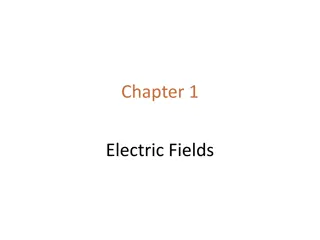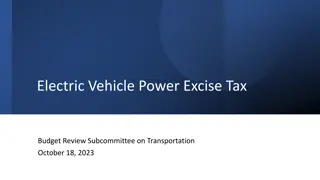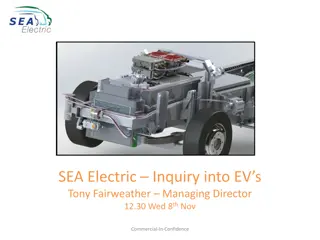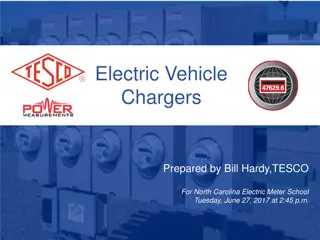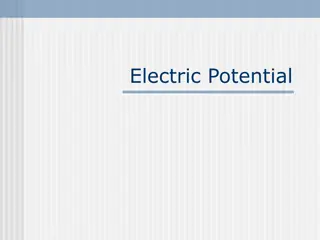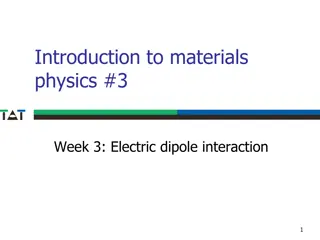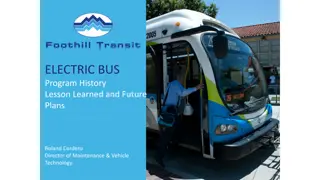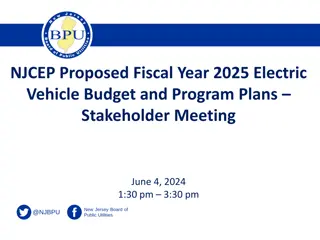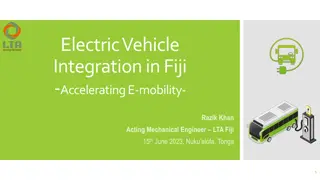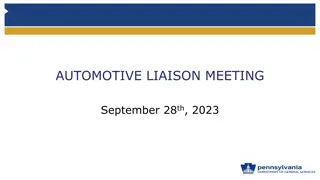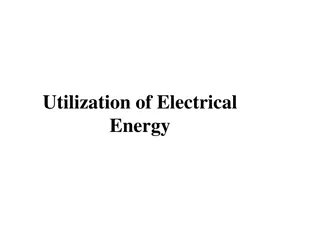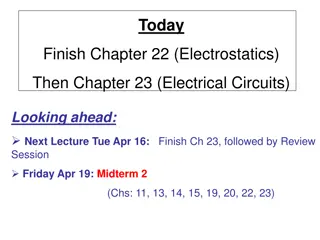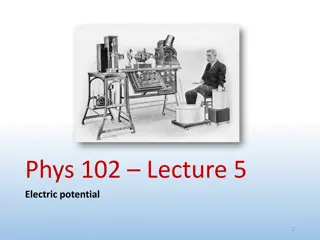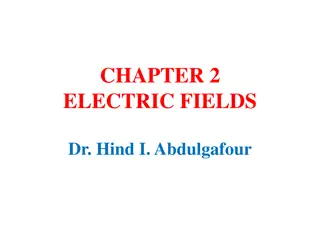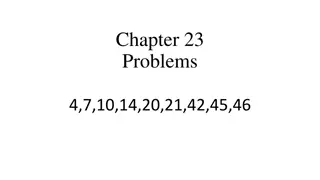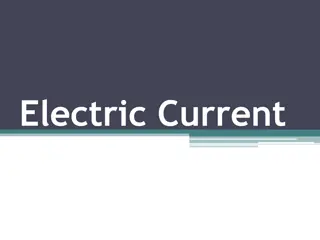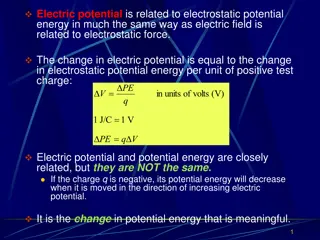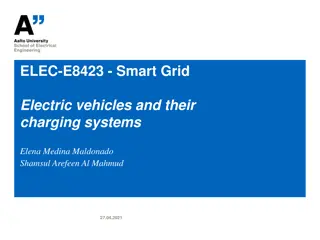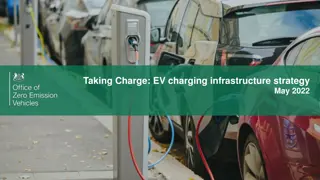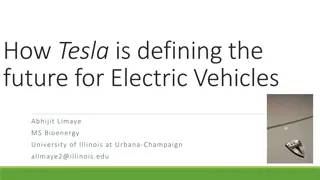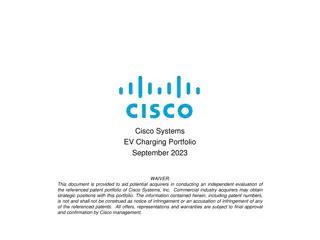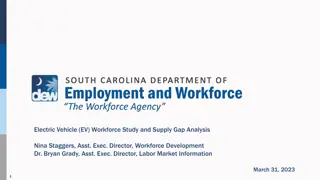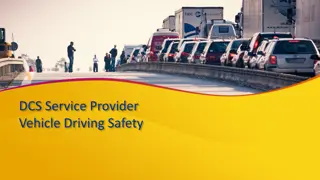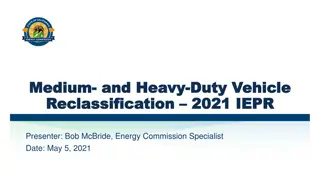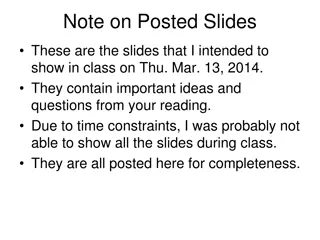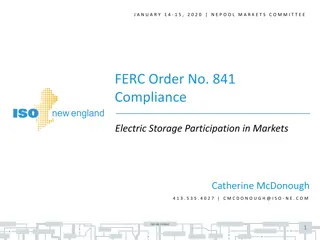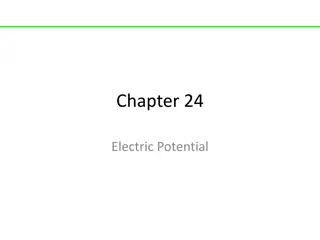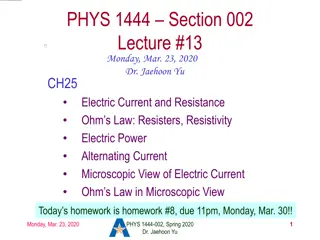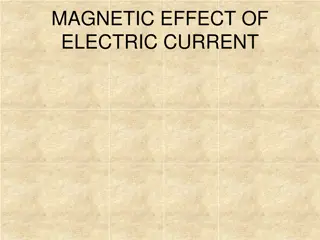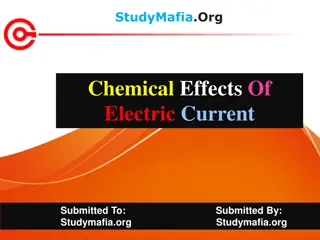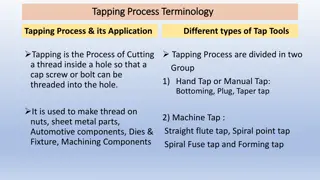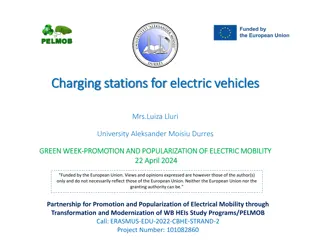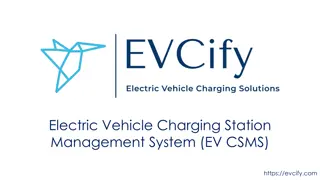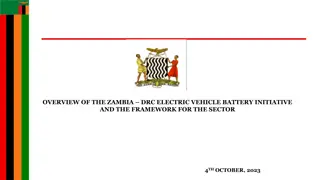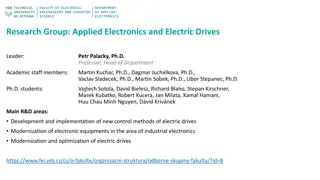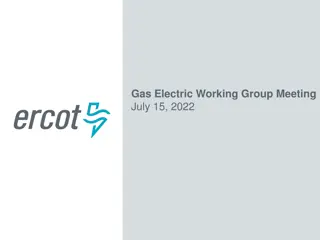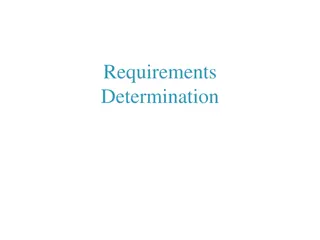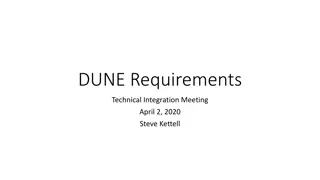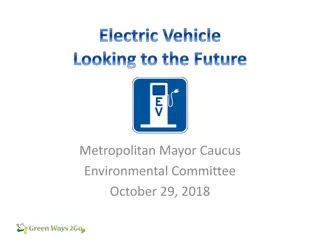Electric Vehicle Group Functional Requirements Overview
This content provides essential information about the VGI Requirements Group update, group meetings, grouping and normalizing terms for various actors in the electric vehicle industry, and functional requirements skeleton. It covers key aspects such as member details, terms normalization, and functional elements for communication standards.
Download Presentation

Please find below an Image/Link to download the presentation.
The content on the website is provided AS IS for your information and personal use only. It may not be sold, licensed, or shared on other websites without obtaining consent from the author. Download presentation by click this link. If you encounter any issues during the download, it is possible that the publisher has removed the file from their server.
E N D
Presentation Transcript
VGI Requirements Group Update
Group info Meetings Tuesday and Thursday 730am 900am Webinar Current Members: Vincent Chen (Luccid), Jeremy Whaling (Honda), Jordan Smith (SCE), George Bellino (EPRI), Mike Bourton (Kitu), Lance Atkins (Nissan), Craige Rodine (Charge Point) Agency Staff: Elise Keddie (ARB), Stephanie Palmer (ARB), Justin Regnier (CEC)
Grouping and Normalizing Terms for Actors BMS (Building Management System) Energy Connection System (ECS) Power Flow Entity (PFE) EV Battery System EV Power Converter EV Driver Energy Meter Plug in location, utility customer, bill payer Formerly known as Network Service Provider (NSP) Electric Vehicle (EV) formerly known as EVSE Clearing House Energy Management System PHEV Electric Vehicle Supply Equipment Inverter Driver Site Host End User Meter Device (EUMD) Aggregator Building Site Controlller PEV Charger Power Factor Correction End User Ratepayer Battery Energy Storage System (BESS) Site meter Controlling Entity Fleet Management Controller Electric Vehicle Level 2 EVSE Rectifier Owner Bill Payer Sub Meter Alternative Energy Supplier (AES) Customer Energy Management System BEV Charger (DC) Bi-driectional inverter Home Owner Demand Clearing House Fleet Management System Level 1 EVSE Charger (AC) Electric Vehicle Electric Vehicle Service Provider (EVSESP) Home Energy Management System Electric Vehicle Service Provider (EVSP) Site Controller Energy Portal (EP) Energy Services Communication Interface (ESCI) Energy Services Company (ESCO) Energy Services Interface (ESI) ISO Municipal Owned Utilities OVGIP Publicly Owened Utilities (POU) Smart Energy Portal (SEP) Utility
Functional Requirements Skeleton Intent: Harmonize functional elements common to all use-cases Provide a consistent set of general terms to use during discussion Allow for all implementation approaches to be overlaid on the functional requirements Provide a structure for the future communications standards protocol mapping sub-group to use EV Battery System EV Power Converter System Energy Connection System EV Driver Functional Communication links & requirements shown here Power Flow Entity Energy Meter Building Management System Utility Customer
Specific Implementation Overlay Examples The implementation specific products or business entity approaches can be identified by combining elements from the functional requirements skeleton. Your individual implementations of interest should be able to be overlaid Car Car DC EVSE EVSE Driver Phone App Utility Charge Station Operator Home Site Host
1. Overview of the need for the working group a. Past efforts (VGI Roadmap, Ruling, CPUC report) b. Current Proceedings/Dockets i. CPUC ii. CEC (IEPR) iii. ARB - SB 454 2. Discussion of separation of technology from value a. What was the agencies goal in doing this? i. Allowing for a focused conversation on each ii. Recognizing the difficulty in predictions on future value and market structure 1. Yogi Berra - It's tough to make predictions, especially about the future. 3. Discussion of definition sub group a. Why are definitions needed i. Different Standard Setting groups ii. Different nomenclature for ISO/Wholesale market, Utilities, Automakers, Policy Makers b. Go over each section of definitions 4. Discussion of use cases a. Discuss tags - V1G, V2G, aggregated, non aggregated, fragmented, non -fragmented, other, unified b. 1 paragraph summary of each use-case (72) i. How it works ii. Final tags assigned
1. Discussion of requirements a. Discuss communication path ways, why are each important and what they can accomplish b.Discuss customer requirements c. Discuss functional requirements d.Discuss non-functional requirements e.Discuss alternative ways to execute without the use of a protocol f. Discuss grouping and normalizing terms to actors g. Discuss whether the EVSE or PEV controls the power flow 2. Discussion of mapping requirements to network architecture a. Discuss current standards that are available 3. Summary of key points from each section
Communication Protocol Mapping Concept Communication standards and approaches can then be mapped between the products and business entities. Those standards can then be evaluated on their ability to carry-out the functional requirements listed for that interface in the functional requirements skeleton. Concept Car Car DC EVSE Vendor specific EVSE Driver Phone App Utility Charge Station Operator Home Site Host Requirements Sub-group DRAFT


